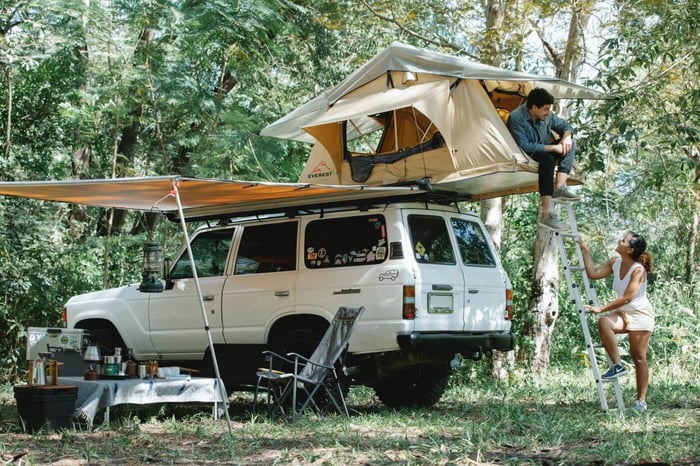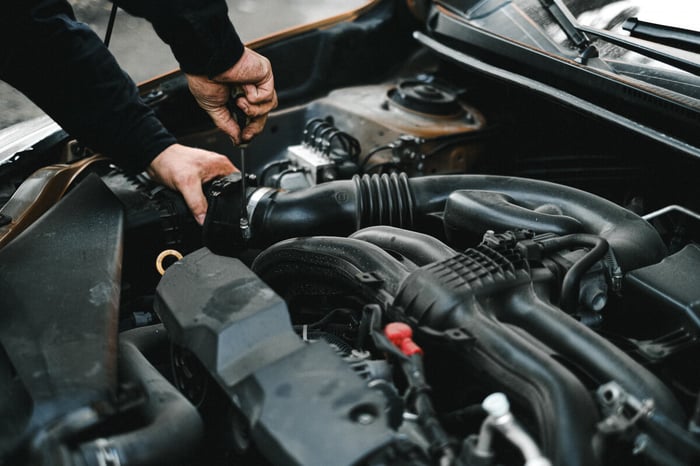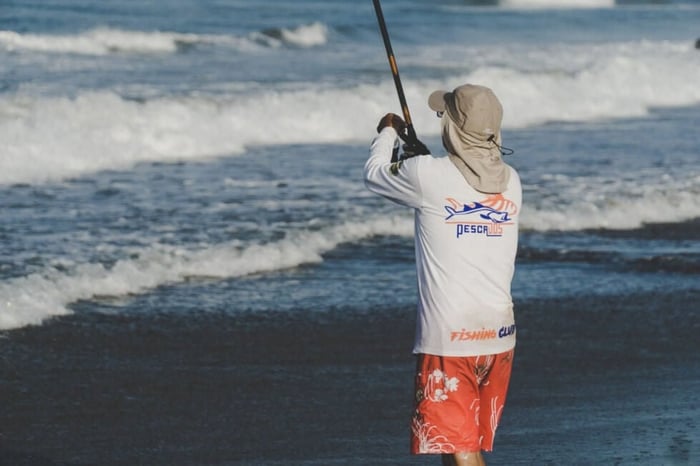Your Cart is Empty
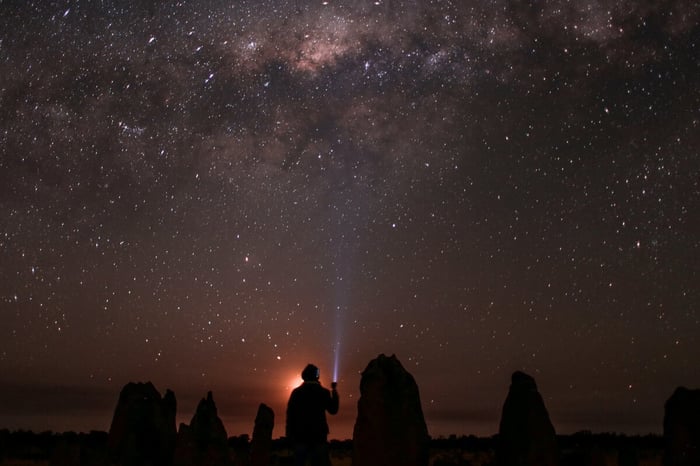
The Top Considerations When Selecting a Flashlights
Listen to article
Audio generated by DropInBlog's Blog Voice AI™ may have slight pronunciation nuances. Learn more
Before we dive into which important factors you need to consider before choosing the correct flashlight for you and your specific requirements, we first need to outline the many different flashlights available on the market – because there are many! Despite being different in power, durability and design, each flashlight offers unique functionalities suited to various needs. For example, perhaps you’re seeking a flashlight solely for nighttime walks, we have the perfect one in mind. Maybe you’re into something a little more advanced for extreme outdoor adventuring, or even simply need something to illuminate your space. No matter the reason nor occasion, there is a flashlight perfect suited to your wish list. At present, the majority of mainstream flashlights are divided into three defining groups – EDC flashlights, full-size tactical flashlights and spotlights. So what’s the difference between them, and what do they do? You’re about to find out!
Main Types of Flashlights
EDC Flashlights
The EDC flashlight is a small, compact and portable light source that has been uniquely designed so that you can take it anywhere for added convenience. Common types of EDC tactical flashlights include small frame models such as pen lights and keychain lights, each of which can be comfortably stored and transported in small places such as your pocket.

Full-size Tactical Flashlights
Full-size tactical flashlights look extremely similar to standard, or classic, flashlights. They are typically 9-13 inches in size, and can weigh up to a few pounds. What truly makes them a great flashlight option is their brightness, not only is the light range wide, the light penetrates very well, the size and solid construction of these flashlights also makes them an effective defensive tool in an emergency.

Spotlights
Chances are if you’ve heard of a lighting tool you’ve heard of a spotlight. Given their far reach and strong illumination, spotlights are generally used for large-scale searches or long-distance lighting. Their beams can penetrate almost any kind of unforeseen weather conditions, including thick smoke and dust, and can focus very bright light on a specific person or thing.

Things to Consider When Choosing a Flashlight
Now that you’re in the know about the most common types of mainstream flashlights, let's move onto analyzing the important factors that you need to consider before selecting the right flashlight for you. You may believe that since all flashlights achieve the same goal of illumination, that they are in fact all the same in their makeup. However, that couldn’t be further from the truth! Things such as materials used, functionality and durability all play a part in differentiating between both the appearance and capabilities of various models. These defining factors are all important considerations when choosing your optimal flashlight, and so we’re also going to recommend our top Hokolie products that successfully meet each of the important requirements for use.
What material is the flashlight?
1. ABS Plastics
Quite a common material used to create flashlights is that of ABS plastics. Where these plastics may lack in strength and durability in comparison to their metal counterparts, they make up for in being extremely light weight and wonderfully budget-friendly. Not to mention, they’re perfect for hassle-free everyday use!
2. Aluminum
Aviation-grade aluminum is currently the most used material when making flashlights. This is because it provides stellar durability against wear and tear, is lightweight while being strong at the same time, and is also very affordable. Aluminum flashlights are a very cost-effective option for those wanting something long-lasting and sturdy.
How is the flashlight controlled?
1. Buttons
Given that it requires a simple, one-handed operation, buttons are perhaps the easiest and most common way to manually control lights. They do, however, come with the disadvantage that you’ll need to press the button multiple times in order to reach the brightness level you desire. So, if your favorite flashlight is button controlled, we recommend that you choose a flashlight with a memory mode which can be directly switched to the level you need in an instant.

1. Slider
Many older, non-tactical flashlights use the slider type of switch, which requires you to push up or down to turn the flashlight on or off. Like buttons, switches can be noisy during use, which could attract unwanted attention in the case of danger or a quiet evening. This type of switch is also very easy to open, and, if it’s accidentally turned on in the your bag or pocket without you noticing in time, it could cause an unexpected (and very unwanted) loss of flashlight battery life.

1. Rotation
This type of flashlight requires both of your hands at once, in order to successfully operate the on and off mechanism. So, although quite a bit of attention is required, the rotation design does mean that you can turn on your flashlight silently – which is perfect if you’re out on a hunt. However, much like a slider switch, a rotating bezel can cause the lights to turn on accidentally, potentially wasting a generous amount of battery life without your knowledge.

Can the light pattern of a flashlight be adapted to your needs?
Whether or not you can alter the light pattern of your flashlight is definitely a factor you want to consider prior to purchasing. For most daily activities, you may not want to or need to use the flashlight in its brightest setting, and therefore you need to ensure that the flashlight has three or more light modes for you to choose from, so that it can adapt to a variety of basic daily use scenarios.
In addition to this, tactical flashlights usually have a memory mode that restores the flashlight to the brightness it used before it was last turned off. This mode is a must-have for those who love hassle-free lighting options, as it ensures your flashlight works just the way you like it each and every time.

What types of beams do flashlights have?
The types of beams in which the light emanates from a flashlight is also a very important factor to take into consideration. Lens reflectors around the bulb dramatically affect how the light is dispersed, and in mainstream flashlights these beam types are usually divided into the following 3 variations:
Flood
The flood light offers a single beam width, offering a lighter beam range. This beam type is suitable for general tasks when out camping or exploring on foot.
Spotlight
This type offers a single beam of light that is focused into a spotlight, designed to penetrate poor visibility and reach great distances. This option is best for locating difficult routes or for use during fast-paced activities.
Adjustable Focus Light
Adjustable focus allows for the beam width to range from wide to focused, and anywhere in between. For example, this means that when looking for a specific item at a certain point, the spotlight mode can be used to quickly locate the point you seek. Alternatively, when you need to view a signage, map or page on a book, the adjustment to the floodlight mode can be made more focused to better suit your needs.

What is the bead type of the flashlight?
With the advancement of flashlight research and development technology, the replacement of LED (light emitting diode) bulbs provides a better solution for flashlight lighting than their older counterparts. Their battery life is much longer than other lamp bead types, and they won’t get too hot – causing a forced pause in usage or a blown out bulb. What’s more, they're brighter and more cost-effective.

What is the battery type of the flashlight?
We can divide the varying battery types of flashlights into two categories: rechargeable batteries, and non-rechargeable batteries.
1. Non-Rechargeable Battery
These kinds of flashlights are great for those who will be mostly on the go, always fully equipped with a spare battery on hand. The advantage of non-rechargeable batteries is that they are extremely affordable and can be in almost all stores.
2. Rechargeable Battery
Flashlights with built-in rechargeable batteries are more suitable for users who need to be able to change the flashlight frequently, in order to adapt to different lighting scenarios during travel. Rechargeable batteries are also preferred due to their minimal impact on the environment, not to mention flashlights that use rechargeable batteries can help you save more money over time.

What is your budget for buying a flashlight?
If you want to purchase a compact flashlight that can be carried around with you on a daily basis, then you don't need to spend too much money for it to get the job done. It’s easy to meet the standard you’re seeking with a more cost-effective flashlight, you just need to be clear on your requirements.
High-budget flashlights are actually more often than not the same size as low-budget flashlights. So what's the difference between them? The first difference is brightness. The more expensive flashlights are more powerful due to the use of advanced bulb, battery capacity and circuit technology. Rechargeable batteries naturally add more to the cost, as do features such as strong impact and water resistance, efficient heat dissipation, and multiple lighting modes. These things however, although not always necessary, are certainly great functions to have access to when using a flashlight.
Our flashlight recommendations

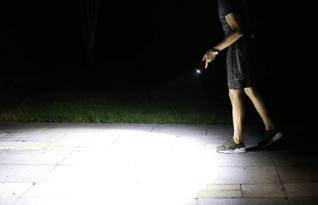
9000 Lumens COB Rechargeable Tactical Flashlight
The first model we’re going to recommend is a rechargeable aviation-grade aluminum flashlight with up to 9000 lumens of brightness. The beam is completely scalable and fully adjustable, allowing you to easily alternate from narrow to very wide, and can be used as a floodlight or spotlight. This flashlight has 3 different lighting modes, each designed to meet your unique lighting needs. What’s more, the rechargeable battery port can also be used to charge your smartphone while on the go. The extremely tough aluminum material ensures the flashlight is completely waterproof and impact resistant, making for reliable performance in demanding conditions. We believe that this is by far the best handheld searchlight on the market.
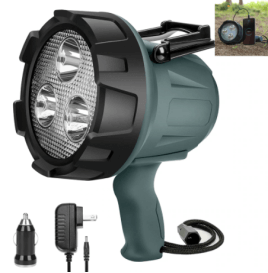
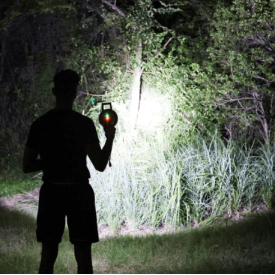
6000 Lumens LED Rechargeable Spotlight
This handheld spotlight tops out at 6000 lumens, while the LED searchlight provides up to 6000 lumens of light for up to about 3000 feet at night. The IP66 waterproof rating also makes this marine LED spotlight resistant to splashing water in any environment, for added peace of mind and extra convenience. The edge encapsulation is designed so that the flashlight will not be damaged when the waterproof rechargeable LED spotlight falls to the ground, or takes a hit from a heavy object – great for hikers or adventurers. Powered by a large rechargeable battery, this high-powered spotlight can last a very long time before running out of juice, so you’ll save both time and money, and do some good for the environment while you’re at it. This model also comes equipped with a convenient stand on the top, allowing for the flashlight to be held or easily supported on the ground at any time to better adjust the angle and light source of the spotlight.
Always be prepared for emergencies
This world is full of unknowns, things that cannot be foreseen or even expected. And while we can’t always ensure we’re fully aware of these things before they happen, we can make sure that we’re taking the necessary steps to be prepared should an unexpected event take place. Whether it’s a lengthy power outage, your car suddenly breaks down in the middle of nowhere, you find yourself lost while out hiking or exploring nature in the dark, or you have to venture somewhere dimly lit to complete a task or errand– no matter the occasion, you need a flashlight that you know you can always rely on.
Now that you know which careful considerations to take into account before choosing the flashlight of your choice, you will be better able to clearly determine the recommended model made for you and your specific needs. Are you more of a DIYer, or an explorer? Love the outdoors or simply need some extra security while taking your dog for a walk? There is a Hokolite flashlight perfectly suited to your needs. All you need to do is apply these considerations and select your favorite!
